The soft rays of April sun release the Northern United States from winter’s bite. It is now that we see the return of a familiar sight to our parks and gardens – the American Robin. As the early tulips turn their sleepy face towards the gentle warmth of the spring sun, so the robin appears, singing his welcoming song.
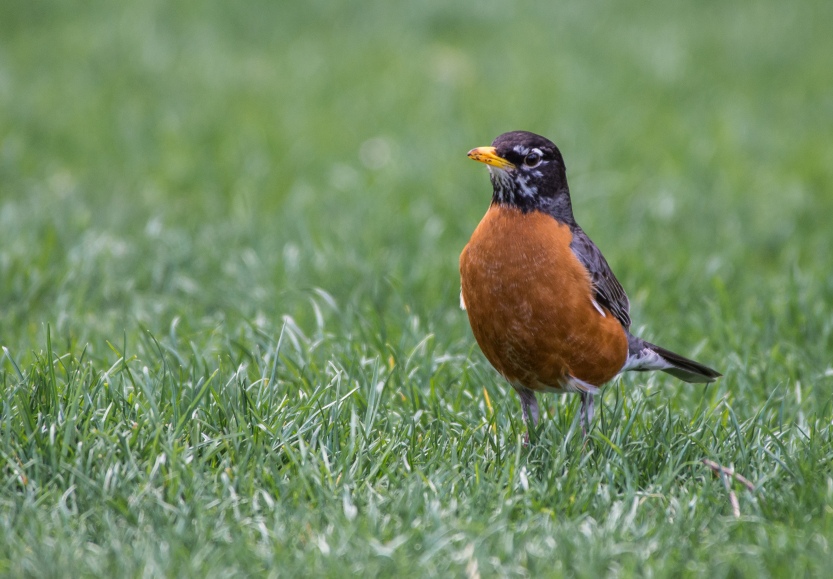
I grew up in Great Britain, where I knew of the feisty Robin as a small brown songbird, with an orange belly, that is depicted on millions of Christmas cards each year. Early settlers arriving from Europe associated the fire-belly of the larger American bird with the much-loved Robin from home, and named it accordingly. The American robin is quite different from its European cousin, being more comparable to the European Song thrush in size and behaviour, but with that unmistakable terracotta breast. The bird is beautiful, and despite living in the United States for four years, my head is turned every time I see one dancing across a manicured lawn.
It is often the case with photographers; the more common a bird, the less photos we take of them. My plan for this year was to find a robin nest to photograph, and I was in luck! Not only did I find a nest, but I did so with minimal effort, in a place that allowed for lazy photography; outside my local coffee shop.

Nesting starts in late April or early May in my New Jersey town. The early weeks of May, before the trees are fully dressed, is a great time to find nests under construction. The nest is a cup of dried grass with occasional twigs, and even a splash of paper or plastic. The cup is double lined, firstly with a skim of binding mud. This smooth mud cup is then softened with a lining of fine grass or hair. Nests can be found in unusual places, but a good place to start looking is in the tree fork where a sturdy branch meets the trunk, level with the lower foliage. In my town the preferred height appears to be around 10 feet off the ground.
American Robin eggs are blue, and about the size of a large grape. The first sign of a nearby robin nest is often the pale blue half shells that have been discarded by the hen, after hatching.

When the eggs have hatched the robins are at their most active, as they work hard to feed hungry mouths. The quick feet of the parents seem to tap an irresistible rhythm on the grass. Peering through green blades with cocked heads, they easily pull worms from the safety of their muddy homes. This is a dangerous time for the robin family as crows, squirrels and grackles search the trees for an eggy protein shot, or even a little fresh meat. These opportunist predators watch my local robins gathering food to see where they take it. Despite the best efforts of the Common grackles, my robins safely hatched their eggs and pumped food down wobbling necks of hungry chicks.
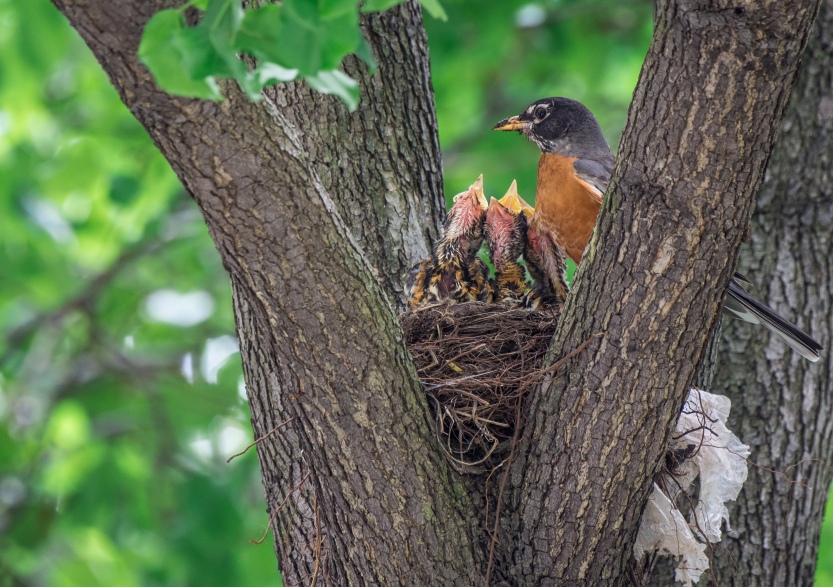
In no time at all, the helpless pink chicks become young fluff-ball robins. I watched my stump-tailed chicks hopping along the ground behind their parents, or wobbling on thin branches as they learned how to grip with their toes. Now feral cats, dogs, rats, birds of prey and the well meanings hands of small children become a risk. If you see a robin on the ground be certain that there is a parent bird nearby, caring for it. If someone picks it up, then just put it down in a safe place, in the same area. It is a myth that the parent will reject a baby if handled by a human. We all stand a better chance in life under the watchful eye of diligent parents and robins are no different.
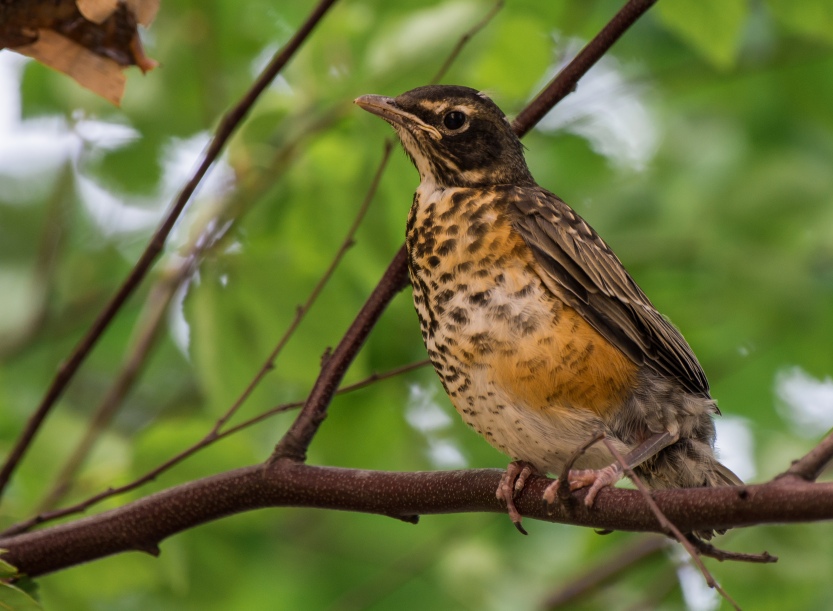
The fluff-balls will soon grow tails and lose the wispy fluff, but this will not stop them begging for food for a little longer than they ought to. It is common to see a young bird, fully capable of feeding itself, still begging from mum and dad. Soon they will be feeding themselves, and will roost with groups of adult males, while the hen gets to work for round two of egg laying, often in the same nest. As I write this article, my local coffee shop hen has settled back on to the nest for her second brood.
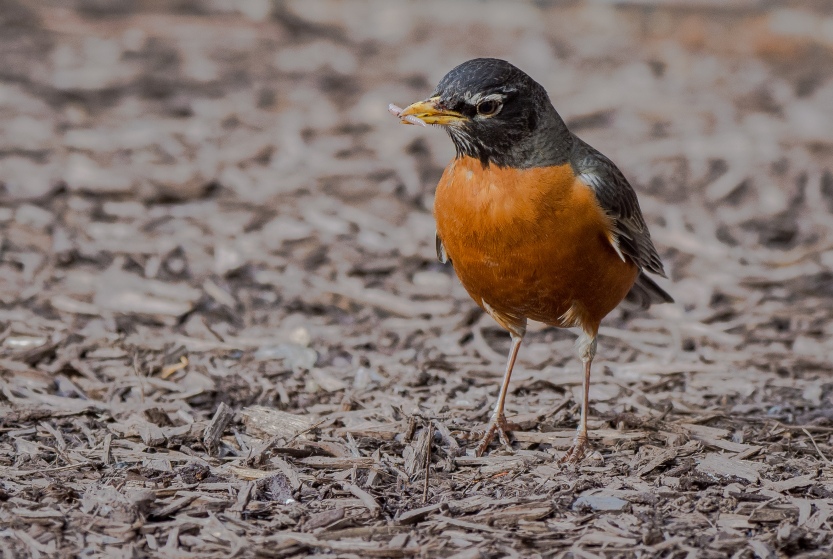
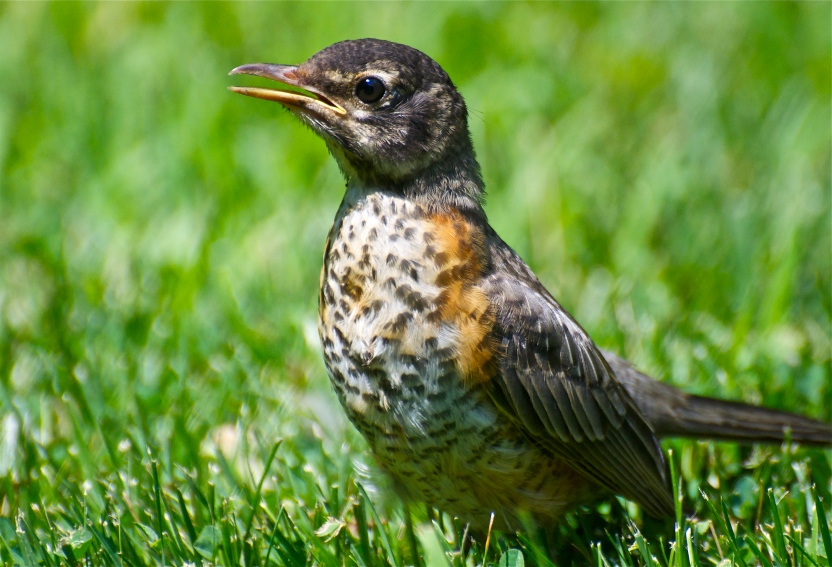
As spring turns to summer and the midday sun hammers down on to irrigated lawns, the robin needs to drink and keep cool. A great way to attract them to your property is to put fresh water down each day. I watch them enjoying the bird bath in Bryant Park and the streams that trickle through Central Park, Manhattan. The bird below was taking advantage of a water feature in the San Francisco Botanical Gardens.

During the bitter cold winter months, the American robin seems to disappear. In truth, robins tend to remain in their home range year-round. In winter, they flock, often away from urban areas, giving the impression that they have migrated. Frozen lawns no longer give up a bounty of worms, so the robin switches to a diet of fruit and berries. For this they must leave the towns and head for the wild. I discovered this for myself during a winter drive to Cape May, where each roadside tree had its own group of robins, squabbling over the best fruit.

The American robin is listed as having a conservation status of Least Concern. There are around 310 million of them distributed across North America. This common urban bird is a gift for people who can’t get to wild places. It provides a chance for all of us to experience the full cycle of avian life, through a bird that ushers spring in to the world.
Join the conversation below. Have you had American Robins nesting in the garden? What unusual nesting sites have you found robins in? Maybe you have been out to look for robins after reading this post? 👇👇
Connect others with wildlife by sharing this post on social media and, if you enjoyed this post, please follow Incidental Naturalist.
Categories: USA
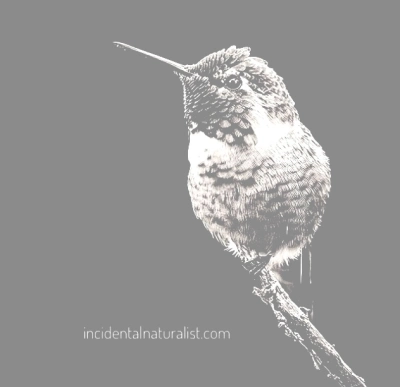


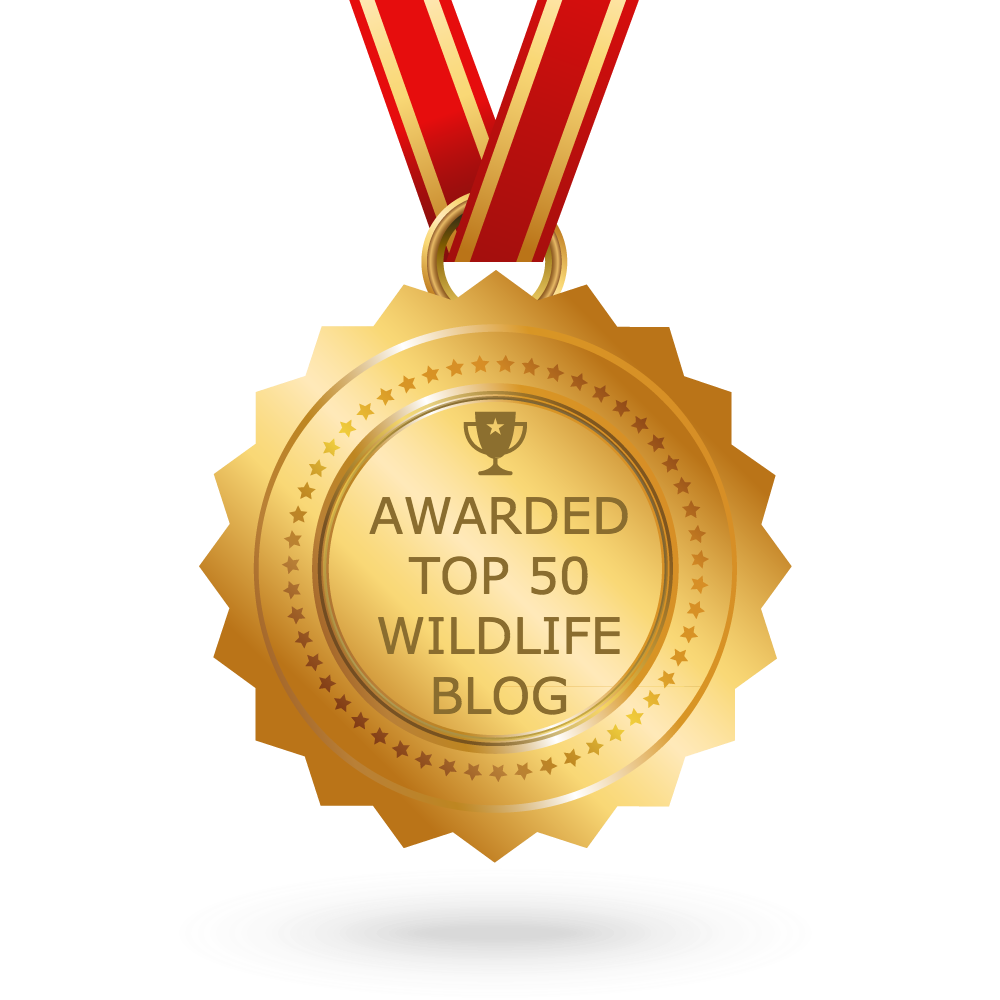

Great post highlighting an American star, David. Wonderful that you found the nest near your coffee shops, and had the pleasure of watching and photographing the creation of the family.
LikeLiked by 2 people
Thanks Jet! I appreciate the kind comment. I was concerned that these gorgeous birds might be a little too common for people to enjoy the article.
LikeLiked by 1 person
Wonderful post. Growing up in Canada, these were the first signs of spring and I would eagerly look for them every April/May as a child. Love the photos and I learned a lot about a bird that I have seen dance among the melting snow in my earliest memories.
LikeLiked by 3 people
Thank you so much! 🙏 it is thrilling to know that my post may have brought back some childhood memories. I also very happy that I was able to share some new information with you. 😊
LikeLiked by 1 person
It’s fascinating to learn about the “popular” animals too. The ones we see all the time. They’re just as amazing as the rare ones!
LikeLiked by 2 people
I love robins! When I hear them and see them… I know summer is just around the corner. I’ve spent literal hours watching them hunt. They’re very good and rarely miss, as I’ve observed. It’s especially satisfying to see one snatch a large spider from the grass. I always wondered where they went in winter. And, to answer your question, I personally have never seen a nest BUT one year while camping along the Snake River in Washington state, had a baby just-learning-to-fly robin land on my now-ex husband’s head. It was so funny we all laughed, as it dug it’s claws in trying to find purchase on a bald head. From there it hopped to the picnic table and hung out with us for quite some time. We picked it up and put it as high up on a branch as he could reach. I still have a photo of it. This was, oh, fifteen years ago now. Anyway great post. I was just wondering the other day when you’d write again.
LikeLiked by 1 person
Thanks for the great comment, Tara. They are certainly expert hunters. I watch them fly down from the nest, grab a bug within 10 paces, fly back to the nest and repeat. Ahh, baby robin feet are not designed for bald heads 😊 I aim to write a post once a month. The photographs take the time!
LikeLiked by 1 person
I’m sure. I just really enjoy your posts. Well written with nice photographs.
LikeLiked by 1 person
Thank you, Tara 🙏
LikeLiked by 1 person
I’m glad you’re featuring the ‘common’ American robin! They’ve been some of my favorite birds since I was a young child.
LikeLiked by 1 person
Thanks Josh! 🙏 some of our most common wildlife is deserving of a little more attention. These are the creatures that inspired us when we were young 😊
LikeLiked by 1 person
Fun post to read David. I too have probably taken Robins for granted a little because they are so common.
What I do love about them is a song I hear most nights in the summer as dusk turns to night. The song is 2 chirps quickly followed by another 2 . The song is a loud and impactful. They repeat this song 3-4 times over a few minutes before going quite for the night.
I have always thought the song sounded like the robin was singing GOOD-NIGHT EVERY-BODY
GOOD-NIGHT EVERY-BODY
LikeLiked by 2 people
Thanks for the comment, Keith! I often walk through my local streets and just catch that GOOD-NIGHT EVEY-BODY sound over the noise of the New Jersey traffic and the helicopters hovering over Manhattan.
LikeLike
What a lovely post! You’re right that we often overlook (or simply take for granted) the creatures we see every day — but as you’ve proven here, that doesn’t make them any less wondrous. I love your photos, as well as the dedication it took to get them. Thank you for sharing this little bit of beauty.
LikeLiked by 2 people
Great post it looks to me like a cross between a starling and a blackbird with a coloured breast. It’s good to hear about other countries wildlife.
LikeLiked by 2 people
Thank you for your kind words, Heide! I’ve been a little short of time and opportunity to photograph wildlife lately. I reminded myself of why I started blogging; to share accessible bucket-list experiences and the wildlife that is around us every day. With this front of mind, I have started taking photos of wildlife within 10 a minute walk of my apartment. It is fantastic to look with intent to see the wildlife on your doorstep. It is there and it is beautiful! That said, for my next post I’ll take to Panama again! 🙂
LikeLiked by 1 person
I think people do tend to take the common for granted, but you’ve done an excellent job making robins special in this piece. Thanks!
We’re busy watching “our” magpie nest. I’d love to be able to see inside. The parents are working so hard! They’ve had to fend off ravens frequently.
LikeLiked by 2 people
Thank you, Eilene! 🙏 Great that you have magpies nesting. It seems that every bird, no matter how aggressive it is, has another bird wanting to eat its eggs or chicks! I really wanted to see inside the robin nest to photograph eggs and pink chicks. I had ideas of using a selfie stick but finally decided that it isn’t worth disturbing birds for a blog post. 😊
LikeLiked by 1 person
I agree! Sometimes I feel guilty when I am working the bird banding station, but it is part of a long-running, large national study helping to document survivability and reproduction. It’s so interesting to get the close-up interaction.
LikeLiked by 1 person
Wonderful photography!
LikeLiked by 2 people
Thank you 🙏
LikeLike
Reading this makes me think of all the sparrows I see on a daily basis. People don’t really pay much attention to them which is probably part of the reason why they can roam big cities here freely. If they had bright and beautiful plumage, the story would have been quite different I believe.
LikeLiked by 2 people
You are spot on! I think I am going to write a House sparrow blog later in the year. There are a lot of birds that have found a way to thrive around us and we don’t even really see them. I intend to shine a little light on them from time to time on my blog. Thanks for the comment!
LikeLiked by 1 person
David, I grew up in a suburban MD home and watched Robins on our lawn, just as you so vividly describe. Now I live in SW New Mexico next to a National Forest. I rarely see Robins in town, probably because lawns are rare in this dry climate. I was thrilled to find my childhood friends in the Forest where they are not easy to spot but unmistakable to hear. Thank you for a great post and pictures. And thanks for telling stories that draw us to what’s right around us every day.
LikeLiked by 2 people
Thanks for the kind comment and for sharing you experience of robins. It is amazing how comforting we find the sound of the robin song. It is a wonderful thing to be transported back to our childhood by the sight or sound of a bird. Have a great day!
LikeLike
Beautiful pics
LikeLiked by 2 people
Beautiful pics, David! And much to learn from your sharing, as always “) You’re so right about the gifts of any wildlife in our urban surroundings- have to cherish the intermingling and keep supporting urban parks, parklets, home gardens, and rooftop gardens within our cities.
LikeLiked by 2 people
Humans are moving into cities like at no other time in history. We are running low on opportunities for our children to know and love nature through experience. Our urban wildlife gives us a chance if we know how to look for it. Thanks for your comment, Lara! 🙂
LikeLiked by 1 person
We have to keep working to maintain and also create new ways for balance in these shared environments. Grateful for you blog/education, David – looking forward to the next!
LikeLiked by 2 people
Great article! Turning toward Ornithology soon in my own blog and love how you set this up with beautiful photos! Awesome!!
LikeLiked by 2 people
Thank you, Rachel! I appreciate your kind words. I’ll look out for your blog.
LikeLike
Awesome job! Really enjoyed this. Happy Blogging! 🙂
LikeLiked by 1 person
Thank you! Glad you enjoyed. It is a wonderful time of year when the robins bring a little springtime with them.
LikeLiked by 1 person
We have had a beautiful female lecustic Robin nesting under the roof of our home these past 2 months. Not sure if any of the chicks survived to fledge, as the nest was spied by crows and I saw one chick taken away. I believe she has a new nest nearby as I see her occasionally around the garden. It has been quite an experience to watch her these last few months as she stands out in our nearby forest.
LikeLiked by 1 person
Hi Chris, thanks for stopping by and taking the time to comment. It is great having nesting Robins around isn’t it? Unfortunately the crows or grackles always take a few eggs or chicks but overall the Robins do well. I’ve got 3 nest near me. A couple of them lost chicks but still managed to fledge at least one chick. I hope you have some photos of her.
LikeLike